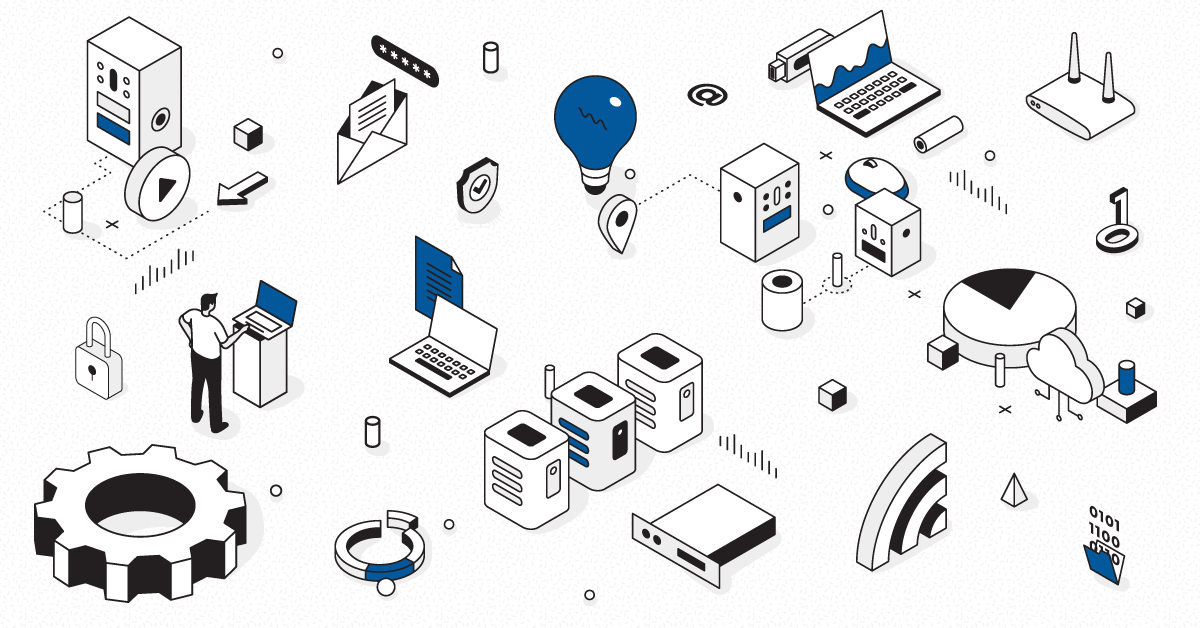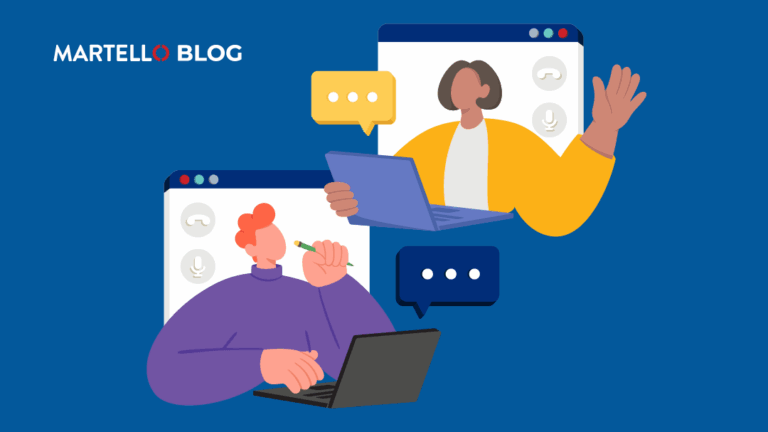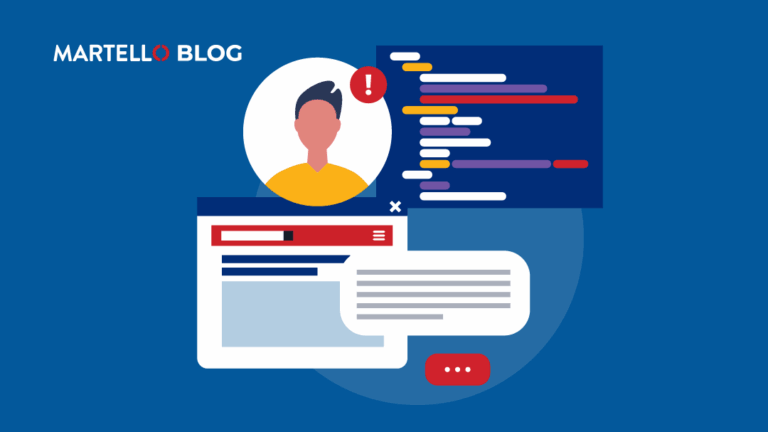ITConnections: Scaling Medical and Virtual Care Capacity in a Time of Crisis
IT Service Management
When COVID-19 swept across Europe, front-line workers rushed into action preparing hospital beds and personal protective equipment supplies. Behind the scenes, IT teams quickly had to put measures into place to enable the dramatic shift to remote work.
In adapting to a “new normal” Leiden University Medical Center (LUMC) continues to leverage Martello’s iQ IT visualization software to monitor life-saving monitoring devices in busy emergency rooms. This ensures reliable application delivery of cloud-based services like Microsoft Office 365 and Azure, to deliver a range of performance data and analytics from a single dashboard.
Supporting a remote work team within a hospital can prove to be a challenge.
We sat down with Willem Bouwman from LUMC, and Kevin Lee from Martello to discuss how having the ability for full visibility allows this mission-critical environment to boost and redistribute resources to where they need it most.
COVID-19 has changed the way many organizations do business. How have you been supporting customers throughout this strange time?
Kevin: In my role at Martello, most of my meetings with customers were face-to-face where I travelled across Europe to support them. With COVID-19 this has obviously changed quite a bit. Luckily with current technology, connecting with customers is still possible through solutions like Microsoft Teams and Zoom. These allow me to stay in touch with people across the world, have meaningful conversations and share content. Even when things return to the ‘’new normal’’, I think collaboration platforms will continue to be critical for teams to work together. Even apps like WhatsApp are more heavily used than ever! If this happened 10/15 years ago, things would have been quite different, I’m sure.
Willem: In my role at LUMC, I had a lot of face-to-face contact. This is shifted to Microsoft Teams and similar tools. We have seen a massive spike in the usage of Teams during COVID-19. In the beginning, we had to get used to this way of connecting to colleagues, but now it’s much more common. Before COVID-19 working from home wasn’t that normal, all work had to be done at the hospital. Even though our work can be done from home. But as COVID-19 is now under control here, it’s the other way around: come to work only if you have to. Many customers come to my desk, but that has shifted now to email, phone and other tools.
IT teams are in the background supporting frontline healthcare workers. How has your job changed since the arrival of COVID-19?
Willem: My work as a Technical Application Engineer is to be a spider in our IT web. Getting information from side A, translate or transform it and send it to side B. Now with COVID-19 this has changed a bit. I’m responsible for our monitoring environment. We use SCOM and recently PRTG with Martello LiveMaps and iQ. We have several TVs in our IT department that show information about the health of our IT environment via LiveMaps. Now with COVID-19 we had to make more personal dashboards that shows only the information for the IT area of interest.
Martello iQ is a great resource to helping frontline IT staff support their business. What features of the software have become more indispensable since the arrival of COVID-19?
Kevin: There are a few things which have proven to be quite valuable for our customers across the board, so I’ll try to summarize what I think are the most effective features our customers use today.
- First, the Services Overview. This provides the overall health of critical applications at a glance and allows quick root-cause analysis. More importantly, as iQ integrates with over 20 different data sources, you can quickly identify which team needs to take action. So it doesn’t matter where the alert, ticket and/or incident comes from, iQ will help you pinpoint it.
- Secondly, custom tailored dashboards. As everybody has a different role to play in the organisation, so different types of data and information are important for users. We all consume this information differently, and with iQ everybody has the ability to see relevant data the way works best for them. We are looking to roll out more ways to visualize this in the future, so stay tuned.
- And last but not least, SLA Reporting: one of the more recent focus points for iQ has been improving the SLA experience, where it’s possible to run reports straight from iQ, export the data and share them with key stakeholders.
Willem: The services overview is great. This gives a quick and fast overview of any possible problems in our IT environment. Creating a new dashboard is quickly done, so customers can use it directly. And the search is really powerful, because of the ElasticSearch engine. And having all the information at one spot, having multiple integrations, helps a lot to respond quickly.
Many hospitals have installed cameras in patient rooms so communication between a nurse and the patient can be done “contactlessly”. These communication systems are key to protecting healthcare workers. How do you monitor these types of systems so the user experience on both ends are satisfied?
We have a lot of cameras, for patients and security. The physicians can now visit the patient without leaving his desk. This was not imaginable before COVID-19. We are going to monitor the camera’s with PRTG. We are almost ready with organization of PRTG in the way we want to use it. Monitoring the cameras is planned for after the summer holidays. I can only tell that this is work in progress.
There are many remote medical device monitoring products available for use today. Willem, what plans or Service Level Agreements do you recommend be in place to ensure such critical information is available at all times for healthcare staff?
Willem: There are a lot of remote medical devices, even my watch is one. We need to select the right devices and make sure that the information is gathered and send securely. At the LUMC we have a medical box that we call ‘The Box’. The Box is a package with various devices for taking home measurements. For example, with The Box, people can measure their blood pressure at home, make a heart video and speak to their treating doctor or nurse specialist via a digital consultation hour.
In our Service Level Agreement we make sure that we monitor 24/7 the environment that is responsible for The Box. The data from patient must be available for the physician all times.
Ensuring that all the right information gets into the hands of the right person at the right time is critical in healthcare. How do you support this need from an IT perspective?
Willem: Within the IT department we now have pretty much everything in view. And what we see now is that we are increasingly creating dashboards for departments outside the IT department. In this way we also get an increasingly better picture of what is happening outside the IT department. We notice that our customers appreciate that. After all, we already have the tools and data at our disposal. They find us through word of mouth, or we show what we can do in demos. And then the ball starts rolling.
What advice would you offer to other IT teams in the medical industry that are struggling to adapt to the world of remote work?
Willem: We cannot go back to the era before COVID-19. Embrace the new way of working. And make sure you get an overview of the entire IT chain. Martello’s tooling certainly helps with this. Combine the data from multiple sources on 1 dashboard to get a complete picture. In this way we have been able to accelerate our search for the causes.
If someone was looking to see how Martello iQ could help their business, what would be their first step to get started?
Kevin: We have several ways that we can help with that. If you are interested in booking a demo session with one of our technical engineers, you can request one directly from our website martellotech.com/try-free. If you want to learn more about the integrations we currently have available as well as functional specifications / pricing, this can be found on our website. Simply visit martellotech.com, under Products -> Store & Pricing, You will find everything there. We also have a variety of content available on our website, so if you are looking for something specific, feel free to reach out to Sandra or myself and we will put you on the right track.
We are starting to see some people return to offices, but we all realize that it won’t be the same environment that we all left before the crisis. It’s now up to management and IT teams to start preparing for what our “new normal” will look like. Willem, what do you think this new standard of normal will look like for most people if and when they return to their offices?
Willem: Despite the cause of this new standard, it did help to open doors. Changes were picked up faster and we were able to monitor medical equipment. We had to adjust dashboards and luckily, we were able to switch quickly. Everyone in the IT department contributed to this. We are now going from an 80% presence at the office and 20% from home, to a 20% at the office and 80% working from home. But we are ready with our monitoring!
Kevin: I think our current customers are already very well prepared for the ‘’new normal’’ with iQ, as it provides simplified access to the data they’d otherwise need various platforms to get to. Personally, I try to stay connected with our customers as often as I can, not just to provide them with support where needed, but also to have a conversation and learn from each other. Our customers are based across the world, each of them with very different approaches to the COVID-19 pandemic. Knowing there is no such thing as perfect response, we can learn from each other and utilize what works best for you.


